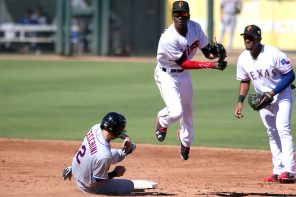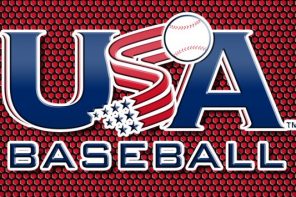Brent Honeywell
 |
|
Honeywell is one of the more highly acclaimed prospects in the Rays’ system, though he didn’t throw particularly well in my viewing on May 28, getting roughed up for eight hits, three home runs, and seven earned runs over three innings of work, while striking out three and walking one. His uniqueness as a prospect comes from a true five-pitch mix of a fastball, slider, screwball, curveball and changeup, which is impressive, if not extreme in variety. He could simplify some, and probably benefit from dialing back – or eliminating – the curveball and stick to his slider Honeywell pitches from a no windup, abbreviated delivery, and he’s got a long arm action and a wrap in the back that he looked to have some trouble getting out of, and looks to be a contributing factor to some trouble repeating, which I saw I this view, and cascade down into command issues. On occasion, he was overthrowing with some back arch. His fastball sat at a comfortably plus 94-to-96 mph, with hard run and tail action to both sides of the plate and with average movement, though the majority of pitches were in the lower end of the velo band. The offering will flatten out and elevate when he overthrows it, and those mistakes up in the strike zone become hittable, which when you are working with a 0.71 GO/AO ratio can lead to some big flies off the bat as seen in this viewing. He exhibited below-average command in this view, and had trouble locating the ball in the lower third, leaving many centered on the plate. I do see the projection of his fastball to maintain the plus velocity and average movement, with the potential to reach average command through improvements in his delivery and arm action. Honeywell shows a usable, 45-grade slider (80-to-84 mph) with fringe-average action that can take both a slurvy shape, and also getting some occasional sweeper action. His curveball is below average at 77-to-79 mph with big 12-to-6 break. He uses the slider/curveball combo to setup his best pitch at present, which is the plus screwball at 76-to-79 mph, coming in with dive and turnover action away from left-handed hitters and into righties with above-average horizontal action, late fade, and plus deception to make it a real weapon. His big issue right now is that he gets in trouble when he’s unable to throw either the curve or the slider for strikes, as he did in this view, showing below-average command of both pitches. His fifth pitch is an average changeup in the 80-to-83 mph range, with fading action that can flash similarities to his screwball in shape, just with a few ticks more velo, and with average command. It’s hard to remember that this kid is still pitching in Triple-A at 22 years old. His control profile is double-plus and clearly ahead of his command at this point, and his control numbers continue trending in the right direction, though the quality of the strikes has the downside effect of increased contact lately. He’s walking just 1.4-per-nine innings this year, in 2017 after walking 1.96 BB/9 across High A and Double-A stops in 2016. He could really turn a corner if he can get the fastball command up to at least average, and throw more quality strikes to set up the secondary stuff. If the command improves, particularly with the fastball, there’s a number-three starter coming up to the Rays in the not-too-distant future. |



